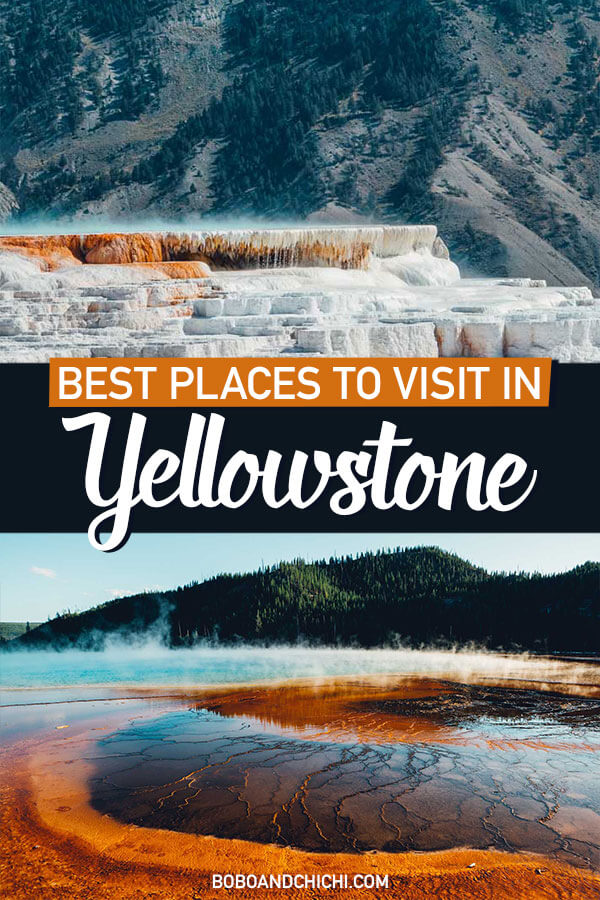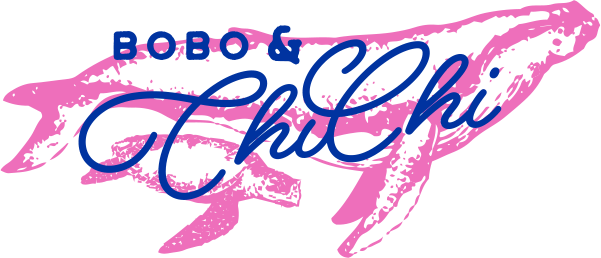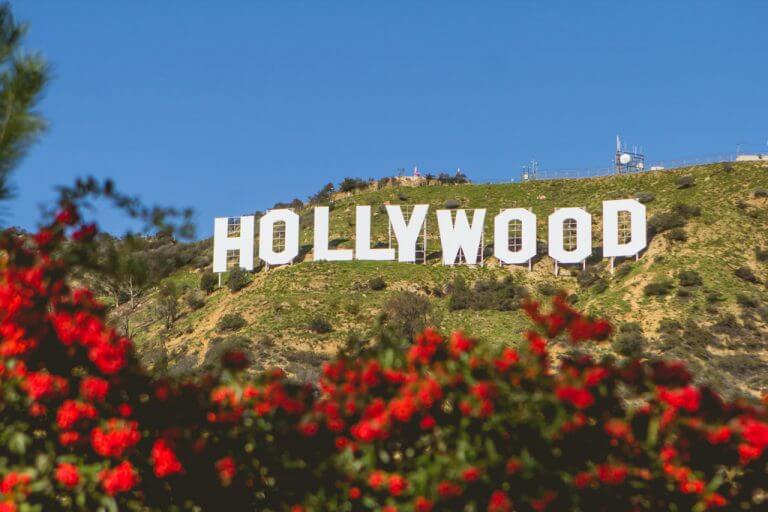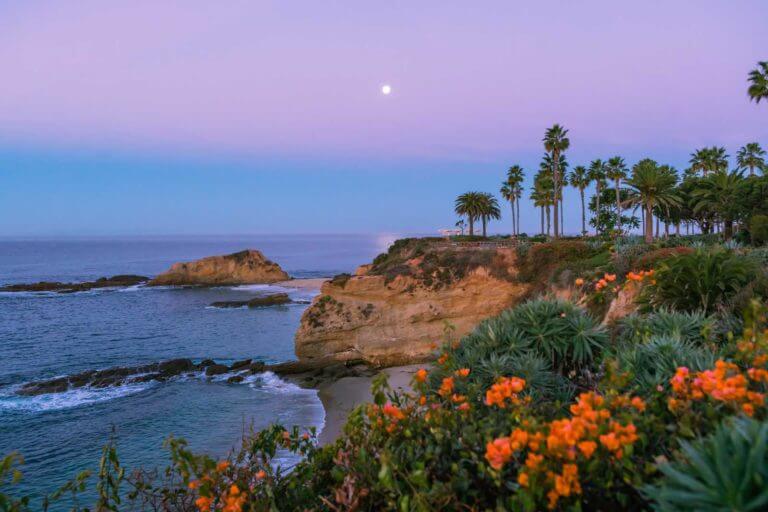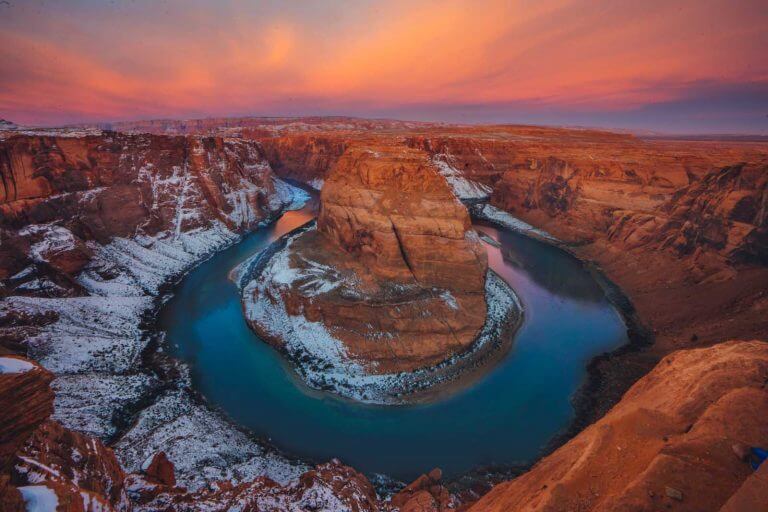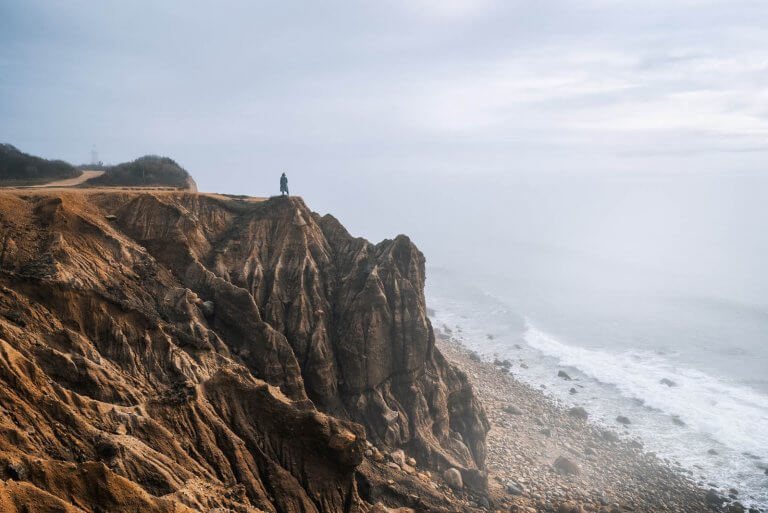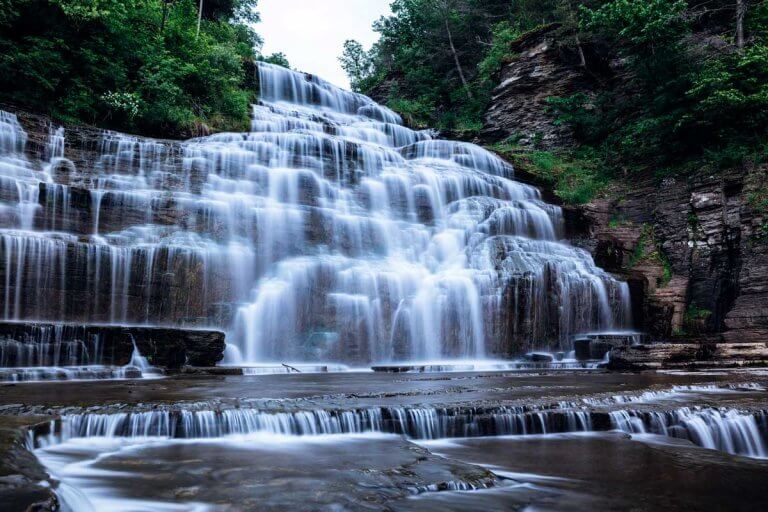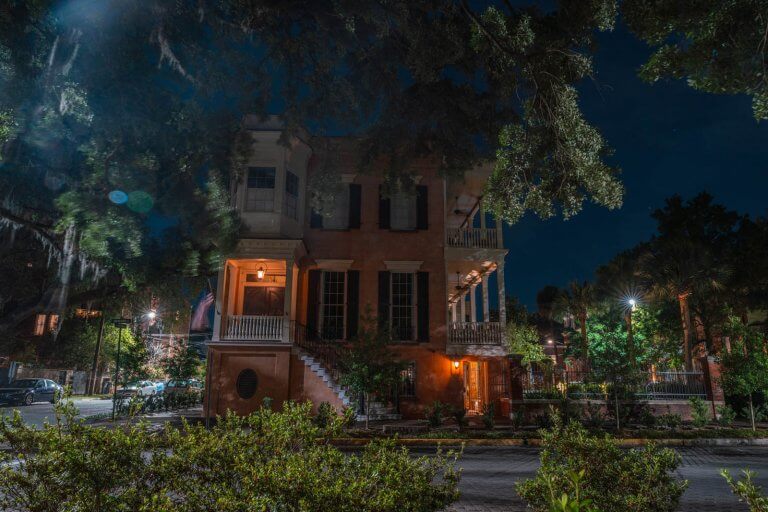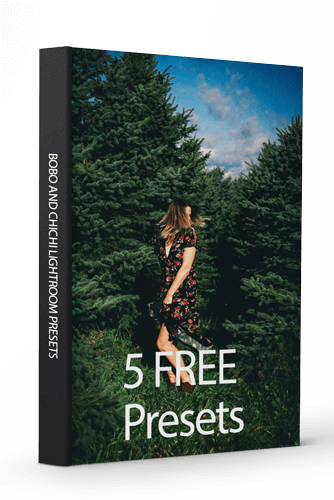12 Not To Be Missed Things to See in Yellowstone National Park
Looking for the most amazing things to see in Yellowstone National Park? We got you covered! It can be hard to choose what to try and see with so many things to do in Yellowstone National Park, so this guide will help you narrow down some of the not to be missed spots in the park.
Every year, millions of tourists come to visit Yellowstone attractions, including the park’s unusual and one-of-a-kind landscape from canyons, rivers, lakes, waterfalls, forests, hot springs, thermal pools, geysers, and wildlife. The first United States National Park has so much incredible beauty to offer it deserves to be on everyone’s bucket list.
Since there are so many things to do in Yellowstone National Park we have put together our picks for the most unbelievable things to see in Yellowstone National Park to help those planning a trip to this incredible place that almost feels like it’s on another planet.
Enjoy our guide for what to see in Yellowstone and the best Yellowstone attractions not to be missed. If you find yourself road-tripping around Montana, be sure to check out our guide and best picks for stops between Yellowstone and Glacier National Park.
In this guide we will not only cover all the best things to see in Yellowstone National Park, but also important information about your visit including the different entrances, visitor centers, where to stay nearby, and other helpful Yellowstone travel tips to help you plan your visit of a lifetime!
Table of Contents
- Yellowstone National Park Entrances
- Visitor Centers & Entrance Fees
- Top Yellowstone Attractions
- Where to Stay in Yellowstone
Yellowstone National Park Entrances
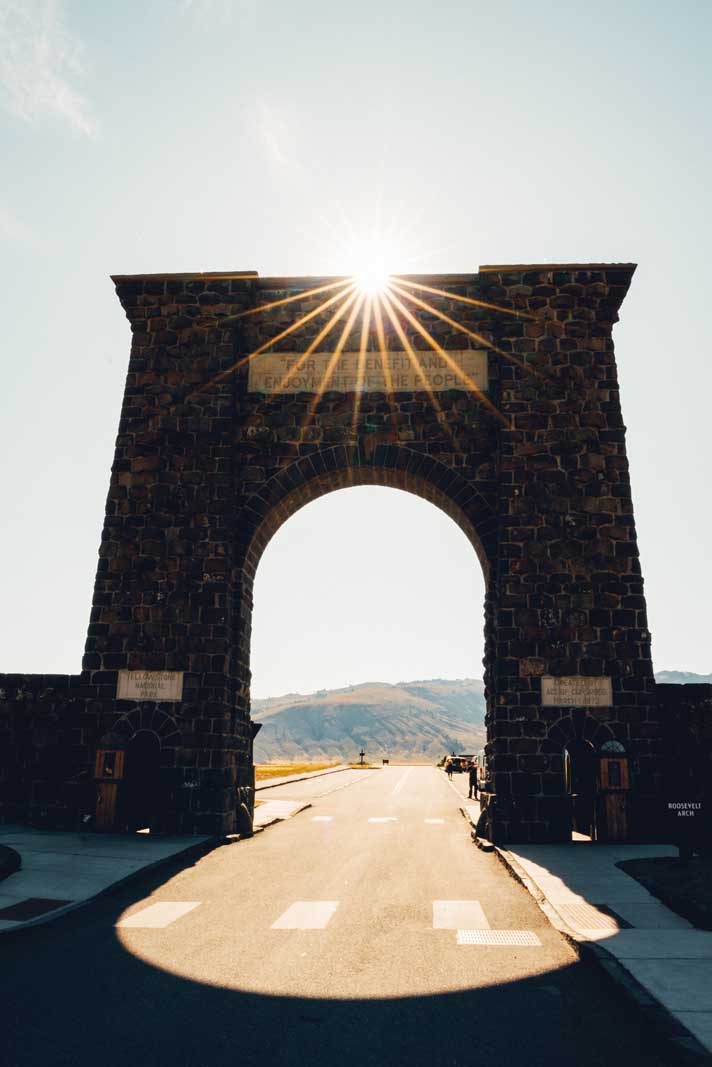
Getting into the park to see some of the best Yellowstone attractions can be done at any of the park entrances. We break down the different entrance and access points including the top attractions and other things to see in Yellowstone near each one.
There are five total entry points to the park: north, east, northeast, south, and west.
North Entrance
The north entrance is located south of Gardiner, Montana, and where we started our Montana road trip. You will cross the state border between Montana and Wyoming when you take this entrance. It is the closest entry point to Mammoth Hot Springs and the Albright Visitor Center.
During the winter, it is the only accessible entrance to the national park.
East Entrance
The east entrance is located west of Cody, Wyoming. It is the best entry point to take if you want to see some of the beautiful mountain peaks of Yellowstone National Park including Avalanche Peak, Hoyt Peak, Grizzly Peak, and Top Notch Peak.
This entrance is only accessible by car from May to November. It is closed to vehicles, except snow coaches and snowmobiles, between December and March.
Northeast Entrance
The northeast entrance is located in Cooke City, Montana. It is the closest entrance to Yellowstone Lake. Although it is also open year-round, the access point via Beartooth Highway closes during the winter. So if you’re coming from north of Cooke City, you may not be able to enter through the northeast entrance.
South Entrance
The south entrance is located north of Jackson, Wyoming. It is the closest entrance to Lewis Lake and the adjacent campground.
Like the east entrance, it is only open to vehicles from May to November. You will need a snowmobile if you’re planning to visit during winter.
West Entrance
The west entrance is located east of West Yellowstone, Montana. Like the north entrance, you will have to cross the state border between Montana and Wyoming when you come in from this entrance. It runs along the Madison River and it is the closest entrance to the Madison campground and the Old Faithful.
You should also take this entrance if you want a view of the Purple Mountain and the National Park Mountain. This entrance is closed from December to March.
Visitor Centers & Entrance Fees
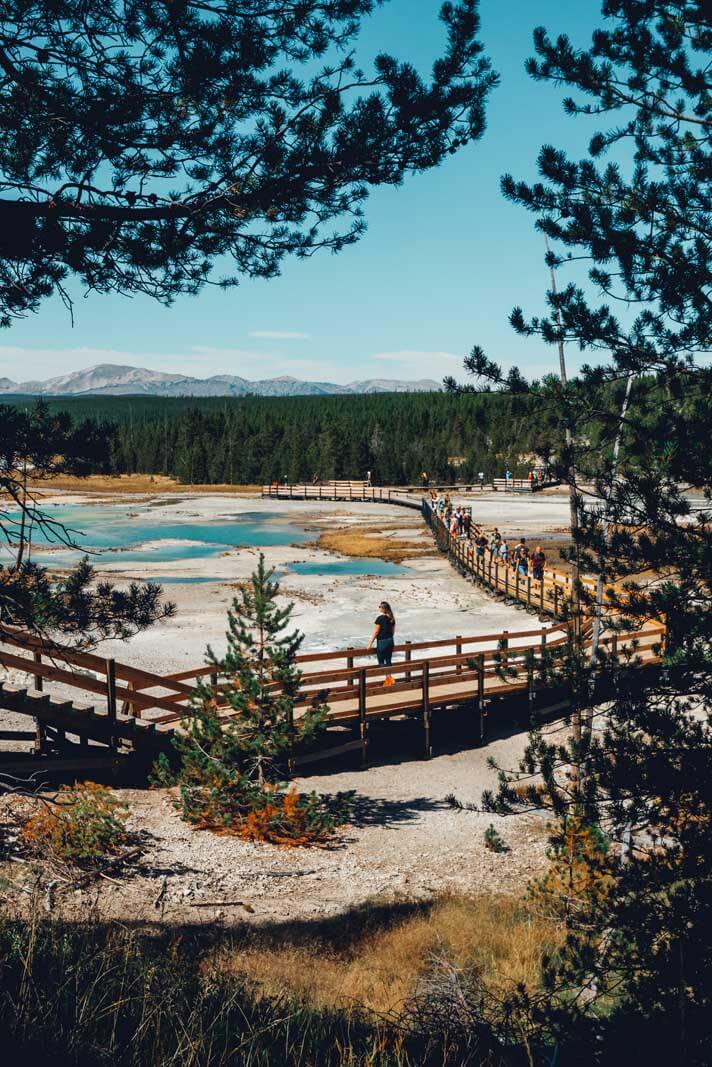
Before diving into what to do in Yellowstone National Park when it comes to all the natural things to see in Yellowstone, here are some visitor centers that you should visit for more information, interactive exhibits, or get a stamp in your National Parks passport if you remember to bring yours (I never can remember!)
Albright Visitor Center and Museum
The Albright Visitor Center and Museum are located just under 10 minutes from the North Entrance Road. You will find it next to Mammoth Hot Springs. You can visit it to see wildlife exhibits, from 8 AM to 7 PM year-round, except for winter when it’s only open from 9 AM to 5 PM.
Canyon Visitor Education Center
The Canyon Visitor Education Center is located 50 minutes away from the East and Northeast Entrance Roads in Canyon Village. It’s an interactive facility where you will find an exhibit about the Yellowstone supervolcano. It is open every day during the summer between 8 AM and 8 PM.
Fishing Bridge Visitor Center
The Fishing Bridge Visitor Center is located around 25 minutes away from the East Entrance Road in the north shore of Yellowstone Lake. It is dedicated to the park’s diverse birdlife and is open daily during the summer between 8 AM and 7 PM.
Grant Visitor Center
The Grant Visitor Center is located an hour away from the East Entrance Road in the west shore of the Yellowstone Lake. It has exhibits providing information about the fire ecology of the national park. It is open daily during the summer between 8 AM and 7 PM.
Old Faithful Visitor Education Center
The Old Faithful Visitor Education Center is located 37 minutes away from the West Entrance Road. It is dedicated to the Old Faithful cone geyser and its geothermal activities. It is open daily during the summer between 8 AM and 8 PM.
Grizzly and Wolf Discovery Center
The Grizzly and Wolf Discovery Center is actually outside the national park, but we’ve included it in our list of what to do in Yellowstone because we found it fascinating. It is located 13 minutes away from the West Entrance Road. This wildlife park and educational facility focuses on grizzly bears and wolves that are native to the area.
Entrance Fees
Here are the entrance fees for Yellowstone National Park, or we recommend buying the National Park Annual Pass for $80 that’s good for all national parks entrance! You can buy these in person, if you’re planning a visit to alot of national parks this is totally worth it.
- $30 7-day private vehicle pass
- $50 7-day private vehicle pass with access to Grand Teton National Park
- $25 7-day snowmobile/motorcycle pass
- $15 7-day bicycle/ski pass
- $15 7-day backpacker pass (no vehicles)
- $60 Yellowstone National Park Annual Pass
- $80 Interagency Annual Pass (for access to all national parks)
- $10 Interagency Senior Pass (for people aged 62 and up)
- Free Interagency Access Pass (for people with permanent disabilities)
- Free Interagency 4th Grader Pass (for American students in the 4th grade and their families)
Top Yellowstone Attractions
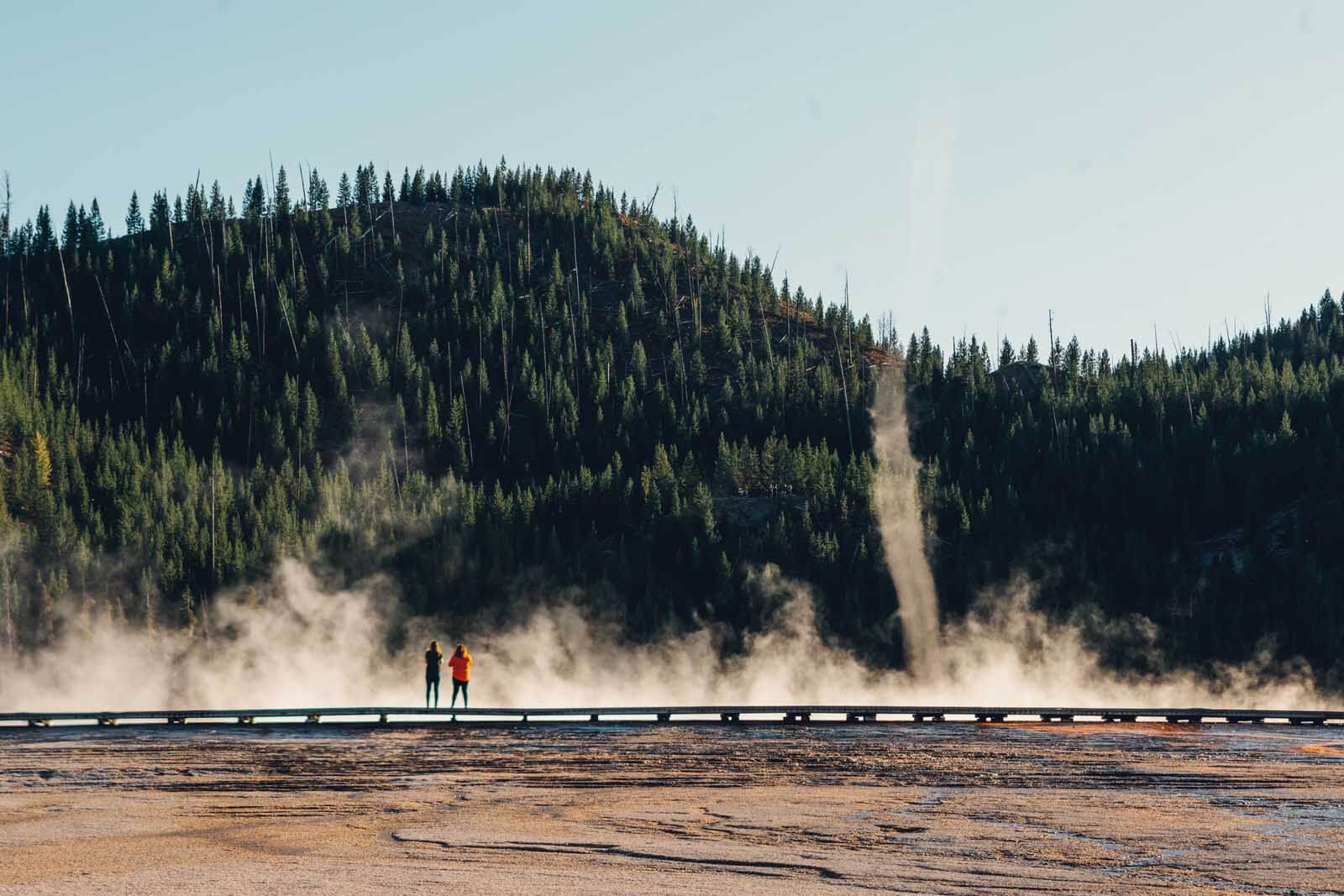
Check out our picks for the best things to do in Yellowstone, here are our favorite and some of the most popular Yellowstone attractions to add to your visit.
Short on time? Perhaps you have a longer road trip stopping at other incredible nearby locations. Be sure to check out our guide on how to see the best of Yellowstone in one day to help you plan the most efficient trip to the park!
Mammoth Hot Springs
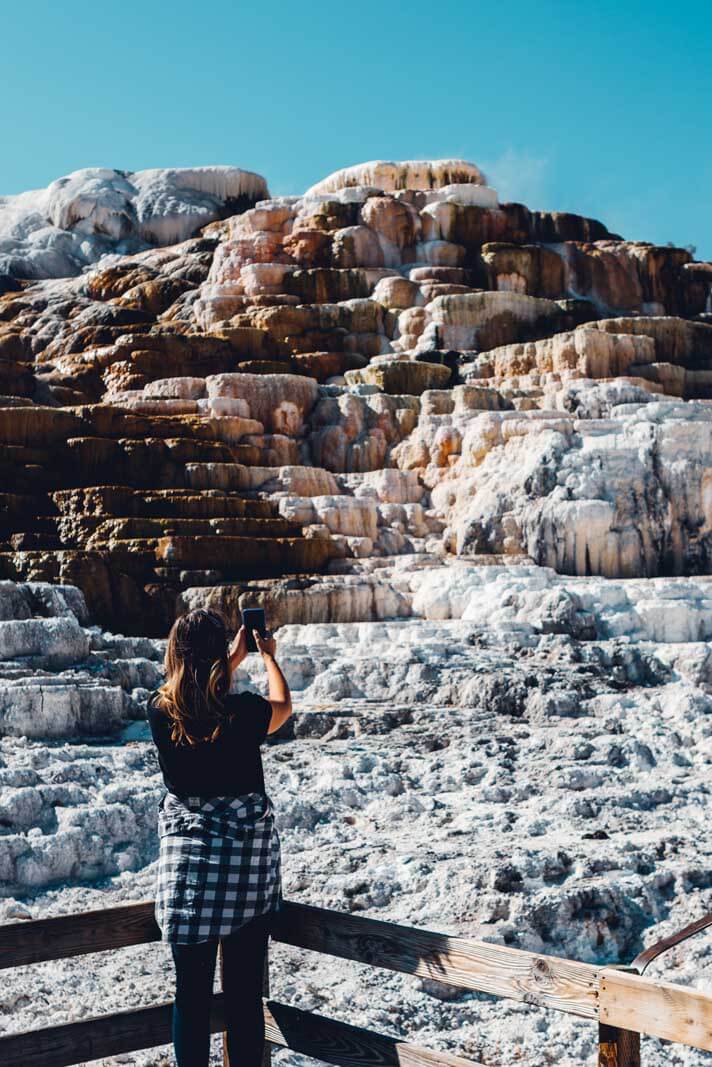
Created over thousands of years, Mammoth Hot Springs is a large complex of otherworldly thermal terraces. The hot water comes from the Norris Geyser Basin after traveling underground from a fault line.
Check out the Travertine Terrace and the Liberty Cap while you’re in this area. The Travertine Terrace is made of layers of calcium carbonate terraces that the water dissolves as it flows through the cracks of limestone. Meanwhile, the Liberty Cap is a 37-foot cone-shaped mineral deposit built over hundreds of years by the internal pressure of a hot spring that shot water from that one spot.
These formations look otherworldly, spend the time walking along the boardwalks to see the different formations and natural phenomenons that occur here.
Although there is water here and it looks like the perfect place for a dip, the public is prohibited from swimming in the hot springs because it isn’t safe and you can actually burn to death if you attempt this, others have.
If you want to experience a swim in one of the thermal areas check out the Boiling River which is located just north of Mammoth.
Norris Geyser Basin
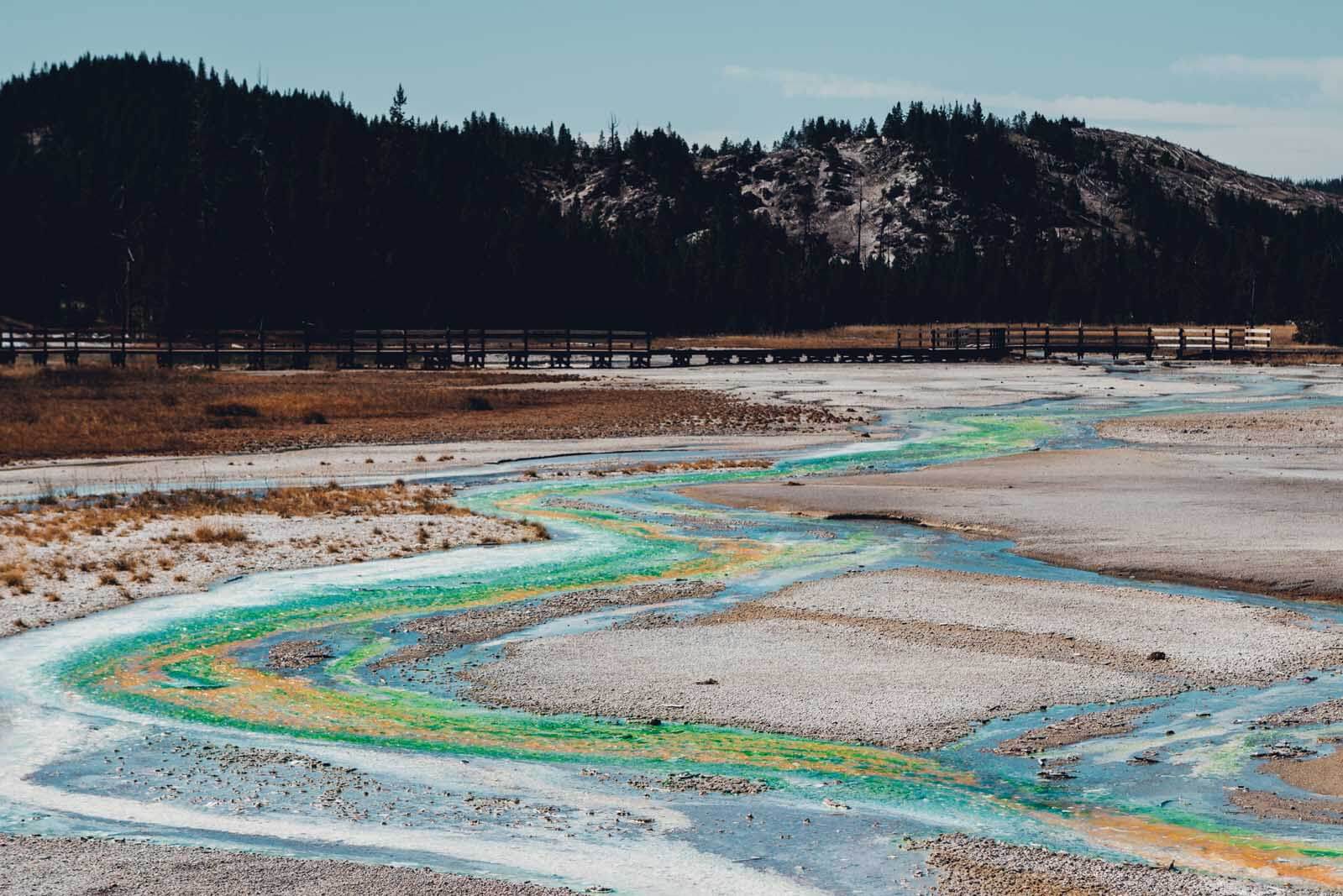
Of all the thermal areas in Yellowstone National Park, the Norris Geyser Basin is the hottest—reaching 459°F just 1087 feet below the surface. Note that most geothermal activity and things to see in Yellowstone at this elevation are above boiling point. Yikes!
The Norris Geyser Basin is also the oldest and most dynamic. Given this alone, it is definitely one of the sites that should be on your list of what to see in Yellowstone.
If you don’t know what to do in Yellowstone when you reach the Norris Geyser Basin, you should know that it is divided into two areas, the Porcelain Basin and the Back Basin. The Porcelain Basin consists of a three-quarter mile of barren ground with boardwalk trails where you can have a sensory experience of sounds, colors, and smells. Meanwhile, the Back Basin consists of scattered wooded grounds with one and a half-mile of boardwalk trails to take you around the area.
Either way you choose, both of these are some of the best hikes in Yellowstone National Park!
In addition, one of the most exciting things to see in Yellowstone is the Steamboat Geyser in the Norris Geyser Basin along the Back Basin trail. It is the world’s tallest active geyser and it is comprised of two water columns that are about 20 feet apart reaching up to over 300 feet tall when it goes off. Steamboat is active and unpredictable and can go off within a period of days to decades for anywhere from 3 minutes to 40 minutes on average. We weren’t lucky enough to be there while it went off but we searched videos of it and it was quite incredible.
Don’t miss the Norris Geyser Basin Museum here at the entrance of the trails where you can learn about the science behind the thermal activity on the earth.
Elk Park
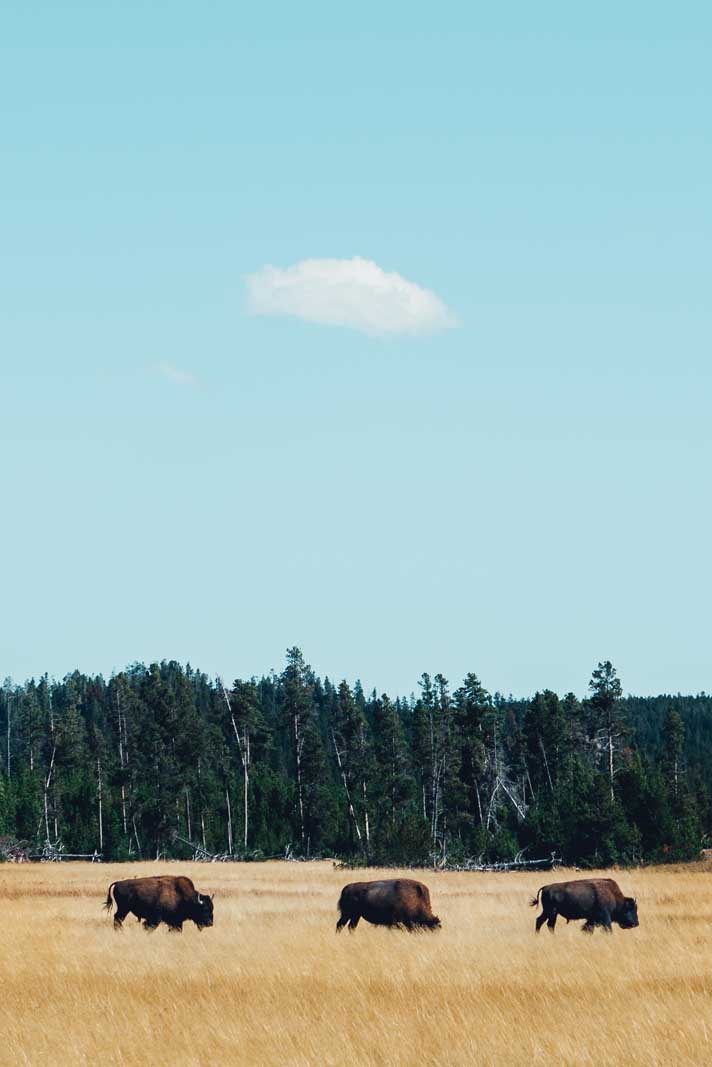
If you’re looking for some wildlife and another one of our favorite things to do in Yellowstone, drive-by where Elk Park is just past the Norris Geyser Basin. This is a great alternative if you don’t have time to go through the Lamar Valley.
We saw herds of elk and bison in this area as the geyser basins are considered some of the best areas to view wildlife in the park.
Bring binoculars and please practice safety by viewing the wild animals from a distance here.
Lamar Valley
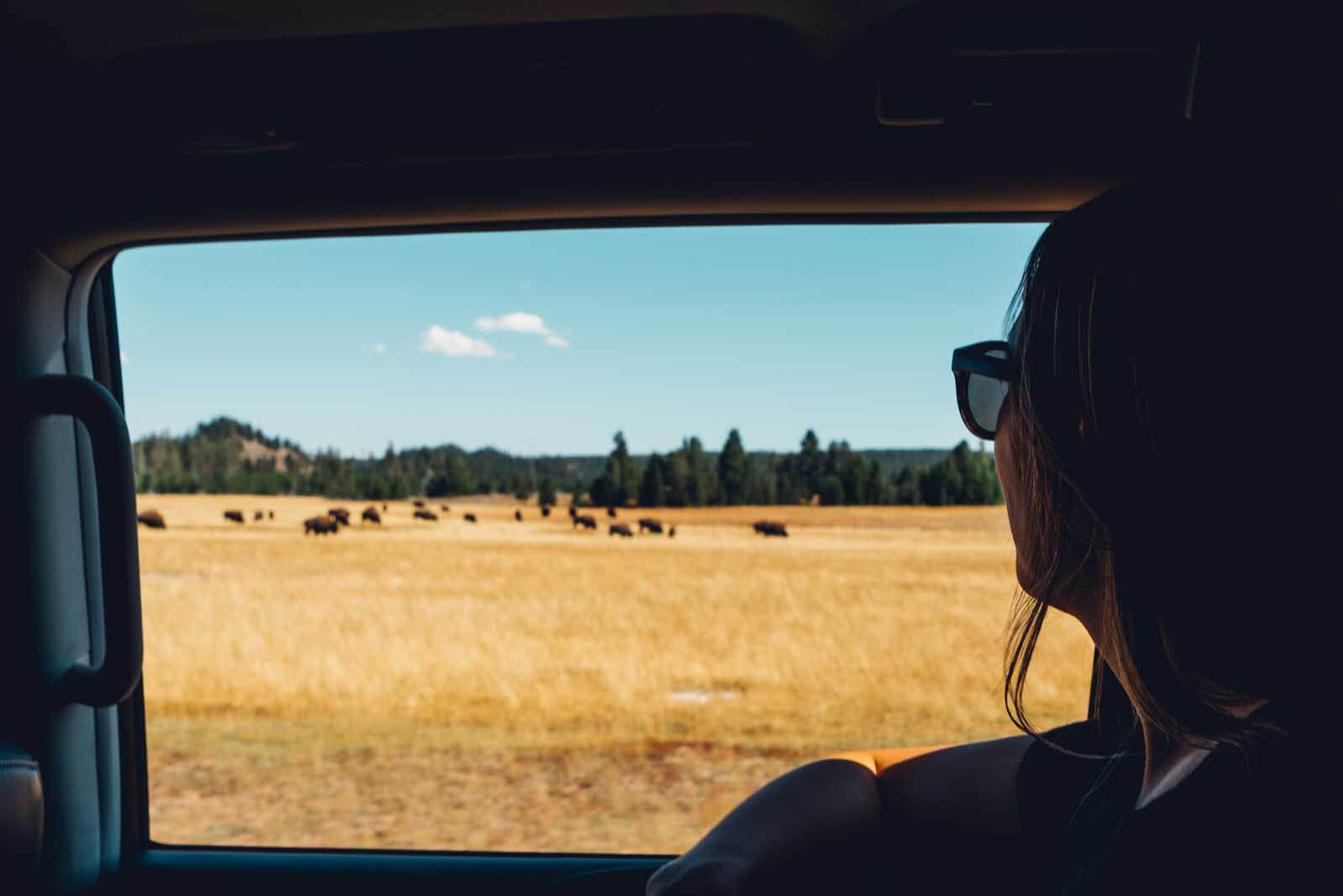
Another one of the best things to see in Yellowstone if you’re looking for wildlife is visit the northeastern corner of the park where Lamar Valley is located. Considered the best area for seeing wildlife such as wolves, bison, pronghorn, badgers, grizzly bears, bald eagles, and more.
The valleys of Yellowstone naturally make the best place for wildlife to roam and is nicknamed the Serengeti of the US because of how easy it is to spot large groups of animals in one area.
Located along the Lamar River, there are pullouts along the road for you to pull over and watch wildlife from a safe distance. As always, practice caution and respect the animals as they are wild. Don’t try to get too close for a photo or just a look.
Hayden Valley
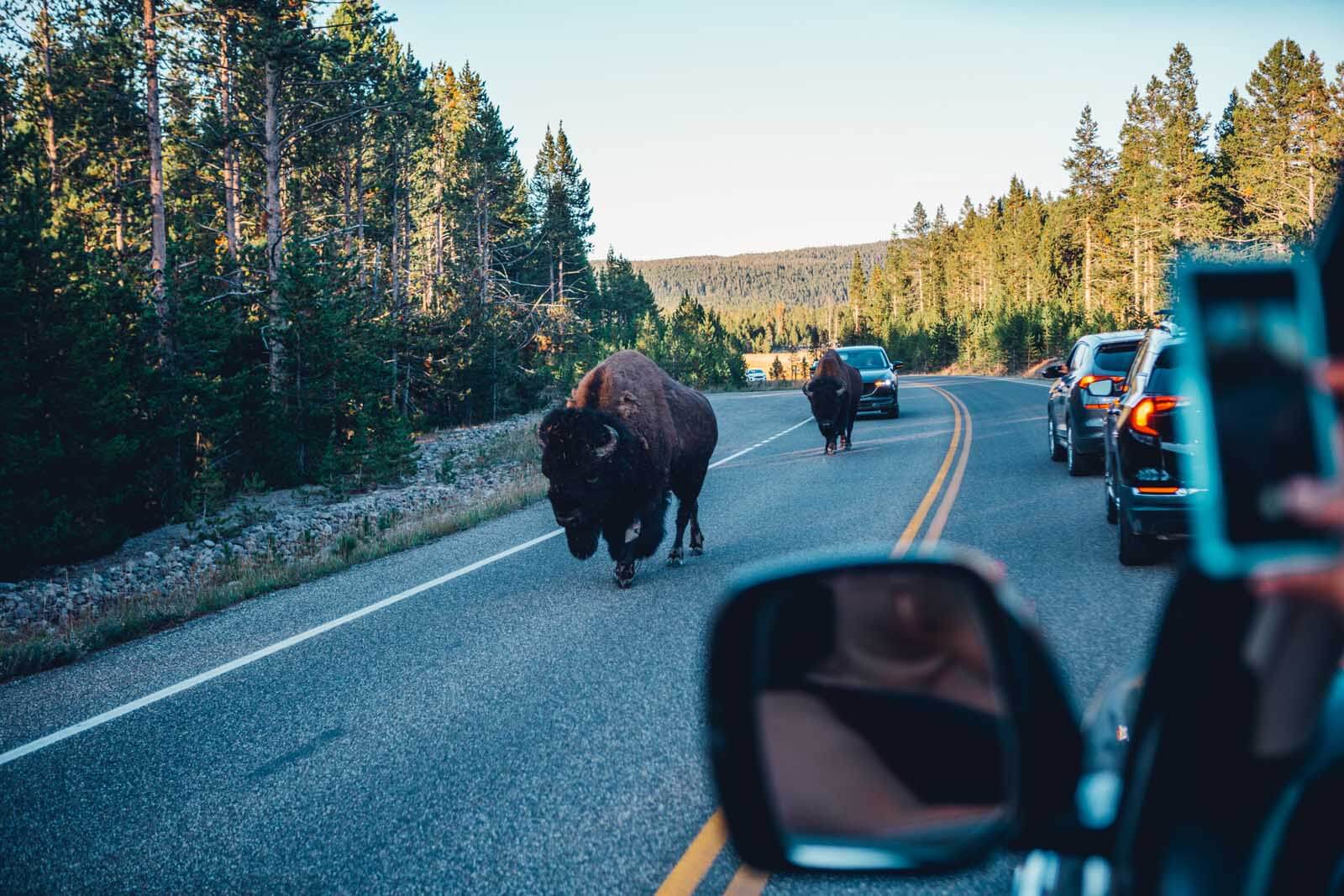
Another top Yellowstone attraction and prime wildlife viewing location is Hayden Valley in Central Yellowstone. This is where you can see tons of bison along the Yellowstone River.
You may also see other water birds, grizzly bears, coyotes, and wolves to name a few. Just like Lamar Valley, there are pullouts along the road and even overlooks where you can safely view the wildlife from the distance in your car.
If you’re more adventurous you can do the difficult 20-mile one-way Mary Mountain Trail to see wild animals along the trail. You’ll have to plan this accordingly as you’re not allowed to camp on the trail overnight as this is prime grizzly country. You’re also warned to make alot of noise and keep as much distance as you can between you and the wildlife you encounter.
Old Faithful
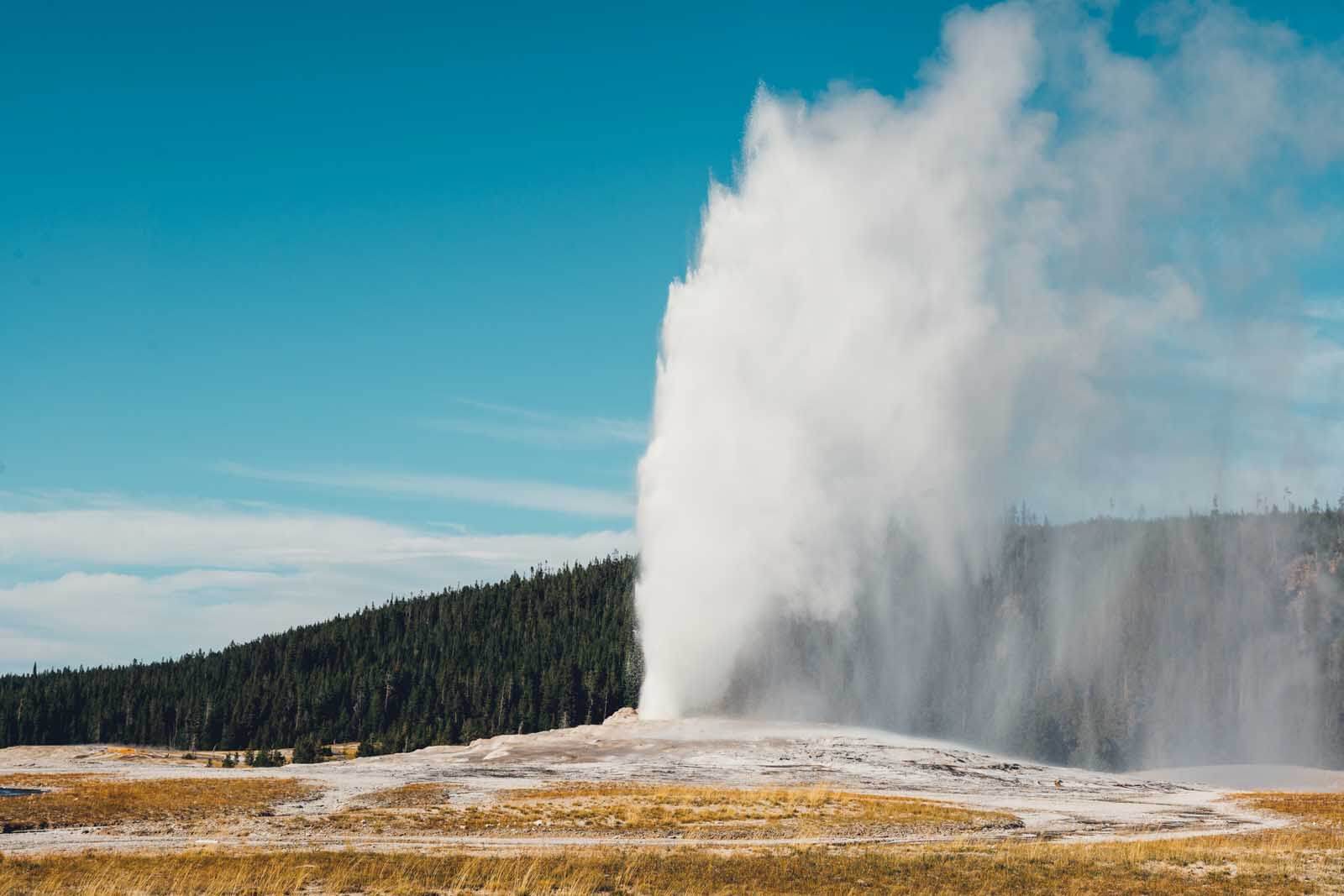
Old Faithful is probably the most famous of all Yellowstone attractions. This famous cone geyser spouts 100 to 180 feet of boiling water every 90 minutes lasting for anywhere from 90 seconds to 5 minutes with a 90% prediction within a 10-minute window hence the name Old Faithful.
There’s often a line to see the geyser near the estimated eruption time. So, after parking your car, check the next estimated time. If it’s coming soon we recommend heading over to check out Old Faithful. There will be standing room only if you come close.
If you have quite a bit of time this is a great chance to stop and eat at one of the restaurants or walk along the boardwalk to the other impressive geysers.
Another amazing geyser nearby and another idea for what to do in Yellowstone is walk to the Beehive Geyser from Old Faithful. We actually saw this one go off from where we were sitting and waiting for Old Faithful. These eruptions last up to 5 minutes and spout water up to 200 feet tall when it erupts! So even if you’re far away and it goes off you’ll still be able to catch a peek.
Next to the Beehive Geyser, there’s Beehive’s Indicator that blasts water up around 15 feet high from anywhere from a few seconds to 30 minutes before Beehive Geyser will go off.
Kepler Cascades
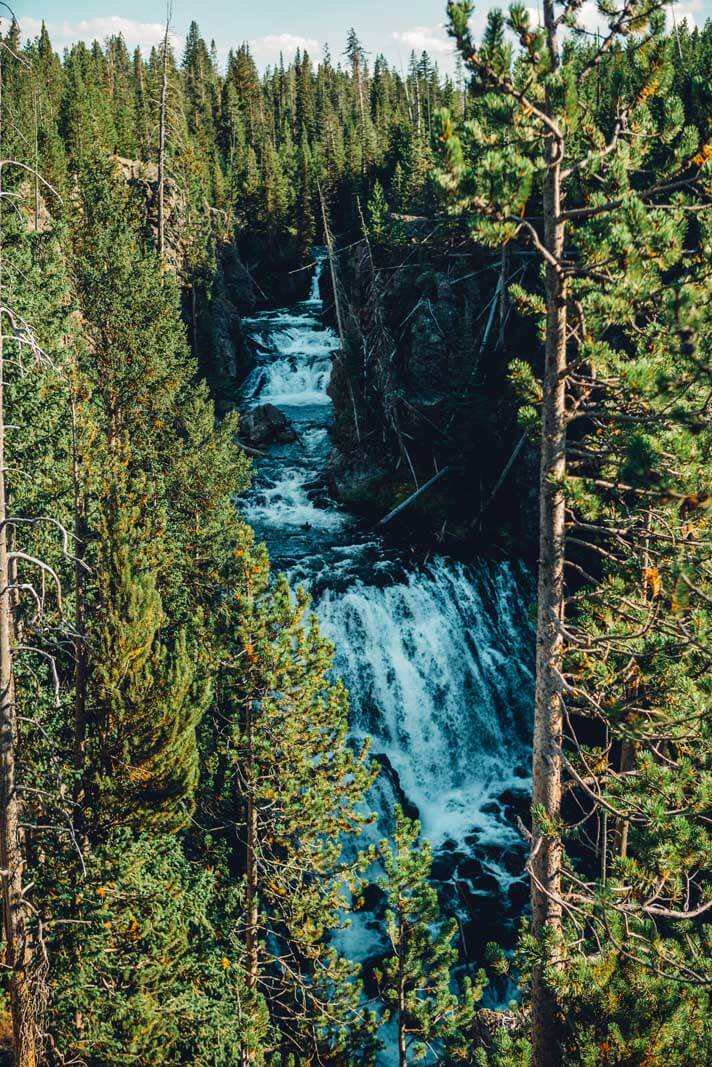
Another one of our favorite picks for things to do in Yellowstone nearby Old Faithful and a little under the radar, check out Kepler Cascades. This gorgeous, lesser-known Yellowstone attraction is fed by the Firehole River.
There’s a steep trail that runs down from a parking area to the base of the falls if you’re aching to get a closer look. Otherwise, from the parking area you can walk to the overlook where you can see down into the rushing flowing series of cascades 150 feet below you.
Grand Prismatic Spring
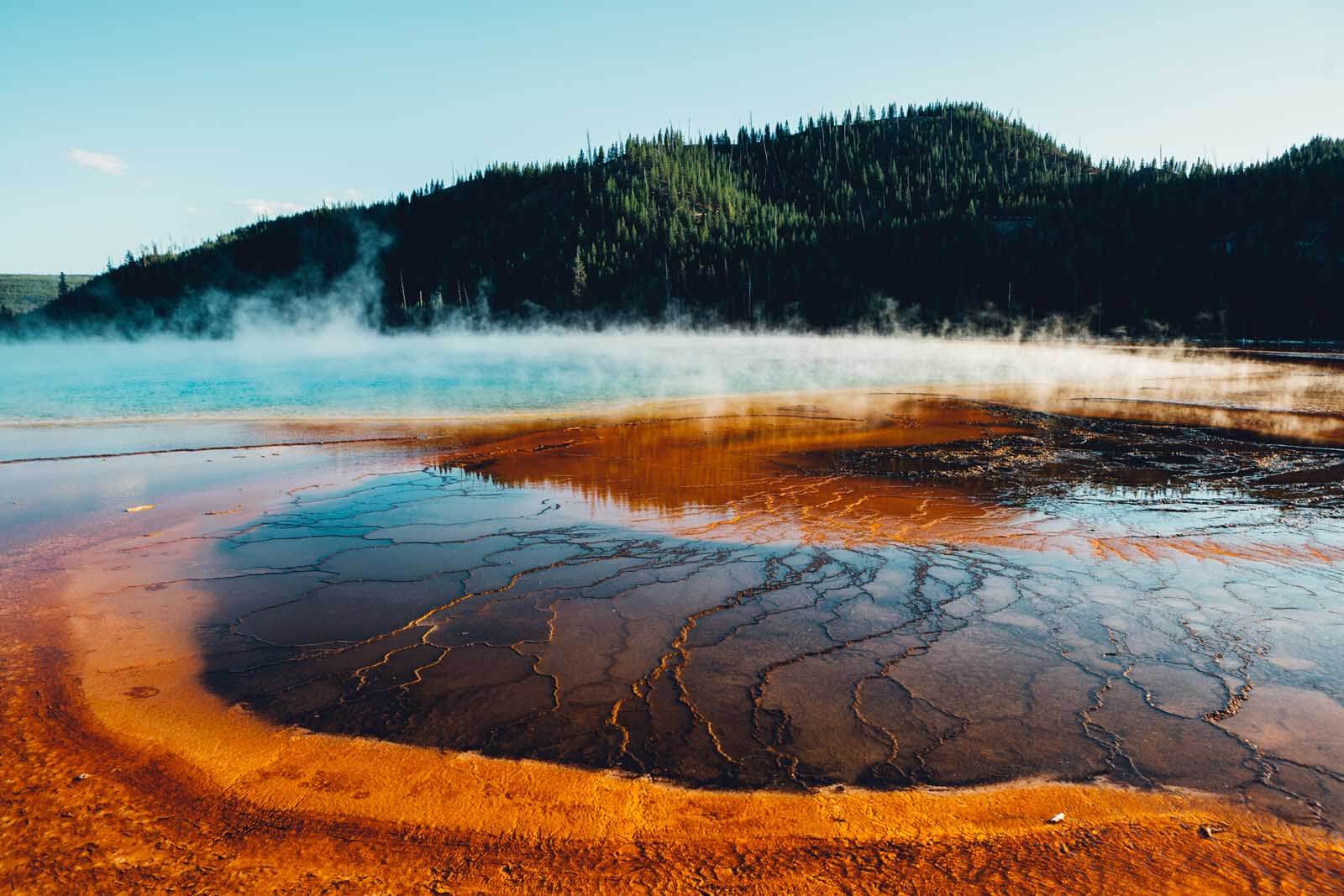
Behold the largest hot spring in the United States! This is a must on your list for what to do in Yellowstone during your trip and easily one of the most photographed Yellowstone attractions. Cross the bridge from the car park over the Firehole River where you can see rushing hot spring water making its way into the river.
Enjoy the boardwalk loop past the Excelsior Geyser Crater, Turquoise Pool, Opal Pool, and Grand Prismatic Spring.
The colors here are out of this world and the main thing to see in Yellowstone here, Grand Prismatic Spring, is almost psychedelic with its yellow, oranges, teals, and blue colors with steam just rising off of it.
To witness this from above to get a sense of scale and all the colors, make sure to complete the overlook hike, we sadly ran out of time to do this.
This is also a very popular for what to see in Yellowstone for other travelers as well and you’ll likely experience crowds or tour buses. If you want to avoid tour buses at all cost come early in the morning or after 6 pm at night. For photos, the best way to see the vivid colors is to visit on a warmer day when there will be less steam.
Grand Canyon of Yellowstone
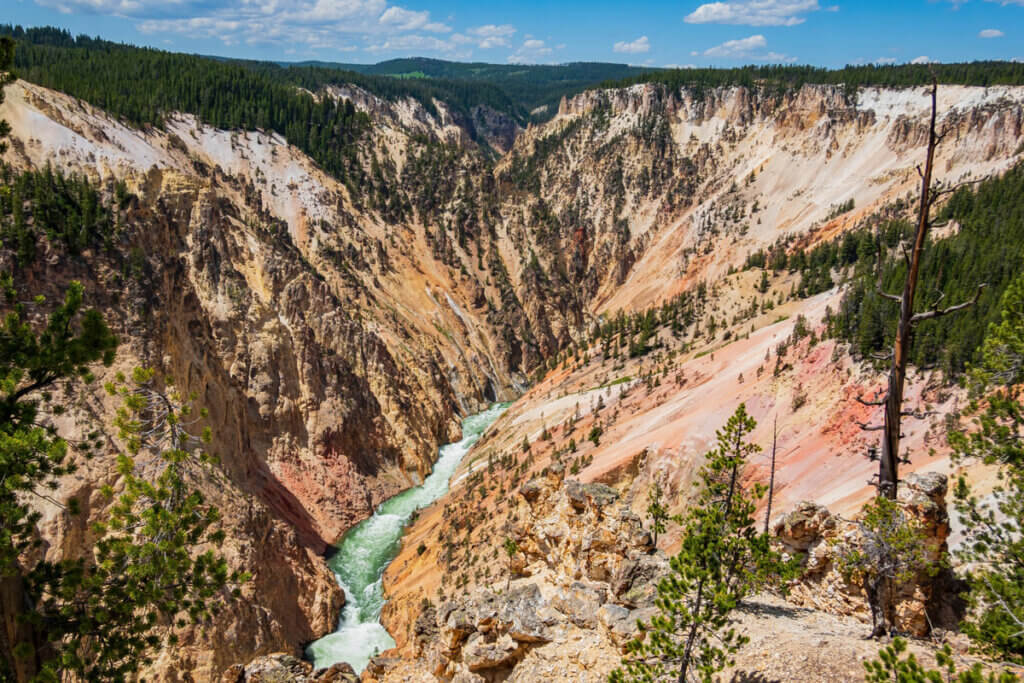
Another pick for what to do in Yellowstone if you’re looking for a spot that seems like a totally different park is the Grand Canyon of Yellowstone. This area showcases the exquisite geologic history through its rock formations in the canyon. You can even see steam coming off the side of the walls from the park’s geothermal activity.
Rushing through the canyon is the Yellowstone River with impressive waterfalls that are their own Yellowstone attraction to behold.
You can witness the amazing views and wildlife including osprey from different trails and overlooks and by driving the rims.
Yellowstone Lake
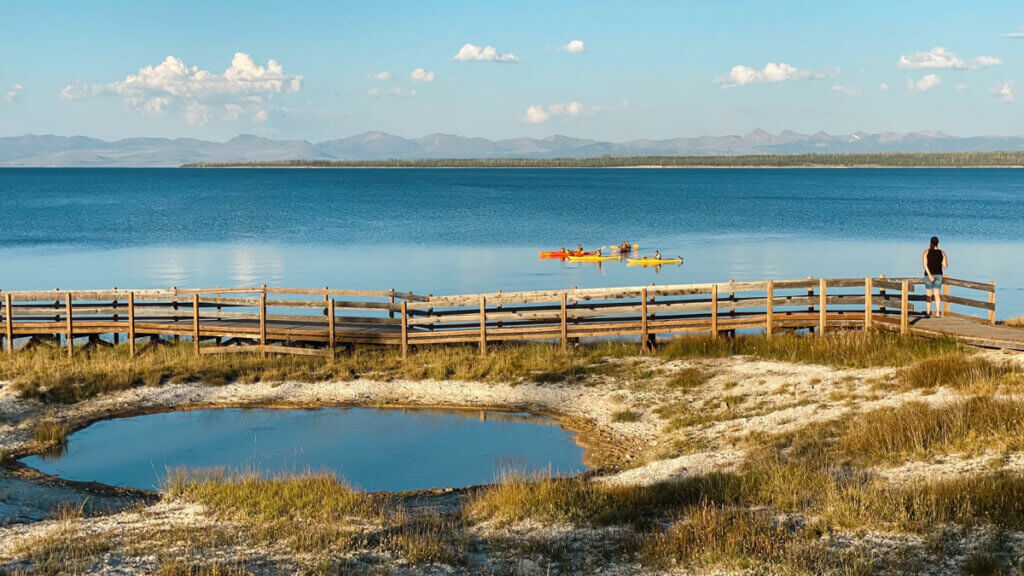
We’re sure most people have Yellowstone Lake on their list of what to see in Yellowstone. It is one of the popular Yellowstone attractions because it is the largest body of water inside the national park and the largest high elevation lake above 7000 feet in North America.
Here you can enjoy water activities like fishing cutthroat trout if you have your license, or hop on a boat tour and see the lake by water. There are also various trails that surround the lake.
Swimming is not encouraged here as the water is too cold, even in the summer. The lake freezes over completely every year and doesn’t thaw out until late May to early June.
West Thumb Geyser Basin
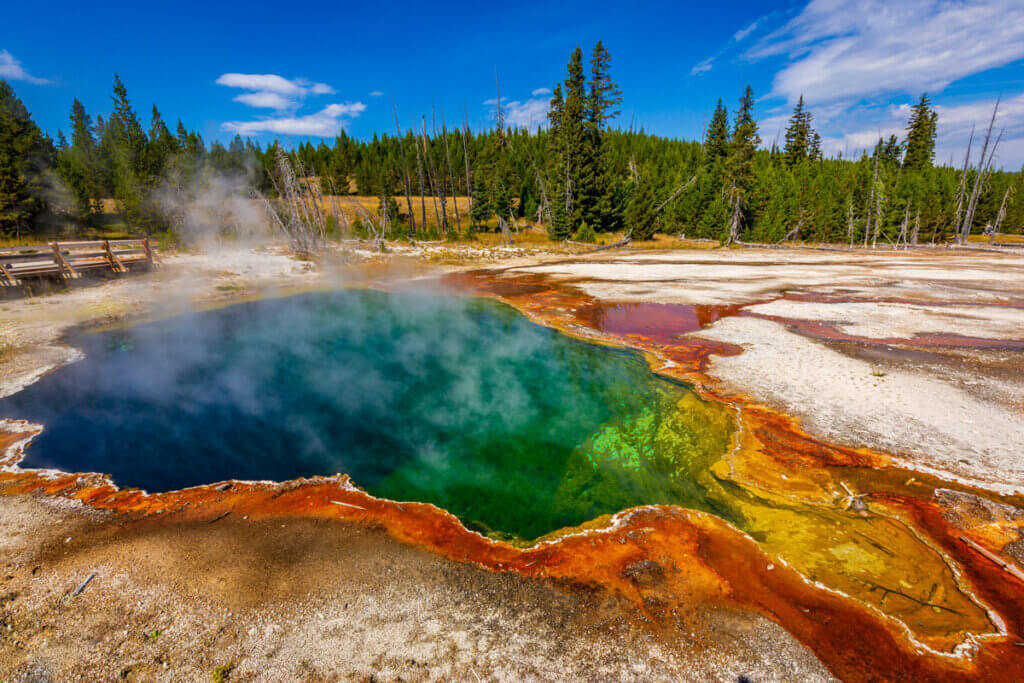
Another pick for what to see in Yellowstone is the West Thumb Geyser Basin located at the shores of Yellowstone Lake. Some of the geysers are actually located in Yellowstone Lake actually when water levels are high after all the ice has melted the geysers are underwater, but as water levels lower they resurface.
Give yourself time to explore the geyser basin with its geysers, thermal pools, hot springs, and bubbling paint pots.
One of the most notable Yellowstone attractions here is the Fishing Cone. There is a legend that fishermen would catch their fish from the lake and cook them right away in the boiling hot spring. However, in the 1920s fishermen have been badly burned from this spring so no one does this anymore.
The thumb paint pots or bubbling paint pots are miniature mud volcanoes that have a strong odor and are just an unusual thing to see in Yellowstone.
Last, the Abyss Pool is also a very popular pick for what to see in Yellowstone at West Thumb Geyser Basin because of its depth and bright color. The pool is said to be 53 feet deep and has a bright blue color right along the shores of the lake!
The Black Pool is also one of the most beautiful because of its bright and vibrant color of blue.
Yellowstone Grand Loop Road
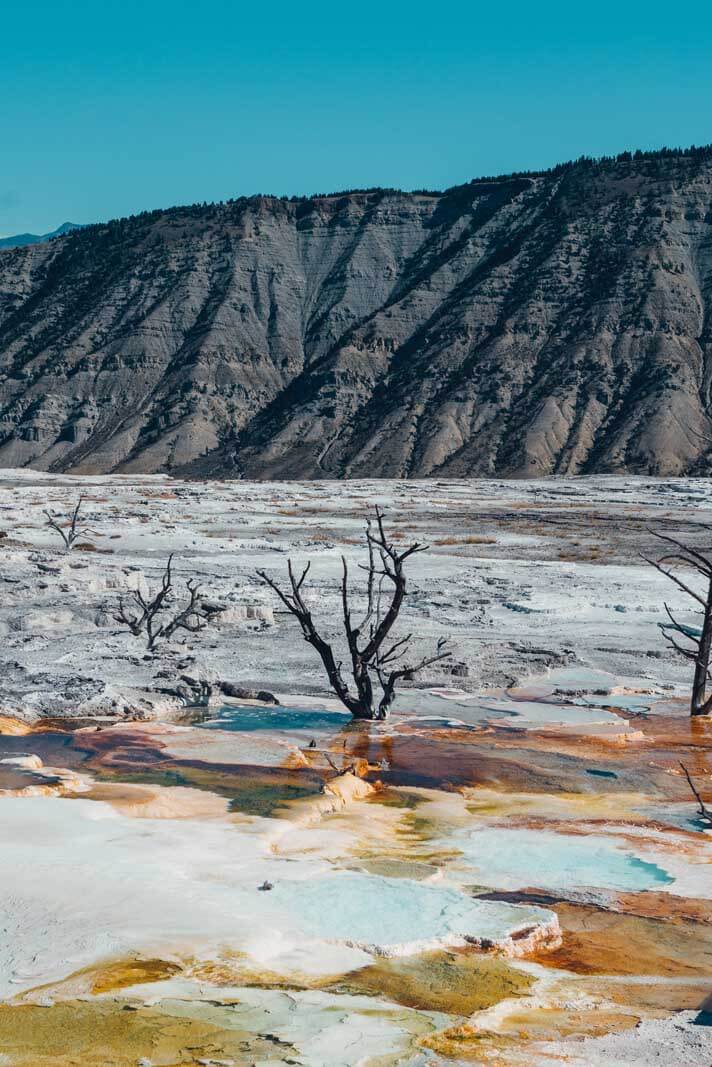
The last thing on our guide for what to do in Yellowstone is to drive around the Yellowstone Grand Loop Road. This is the best way to experience and see all the famous picks for what to see in Yellowstone.
You will pass many of our picks for things to see in Yellowstone including, the Upper, Midway, and Lower Geyser Basin, Grand Canyon of Yellowstone, Yellowstone Lake, Mammoth Hot Springs, and more.
The entire loop road takes 4 to 7 hours to complete depending on how long you take at the different stops. The entire loop is 142 miles that loops like a figure eight through some of the park’s most famous sites.
Note that the Grand Loop Road is closed in the winter.
Where to Stay in Yellowstone
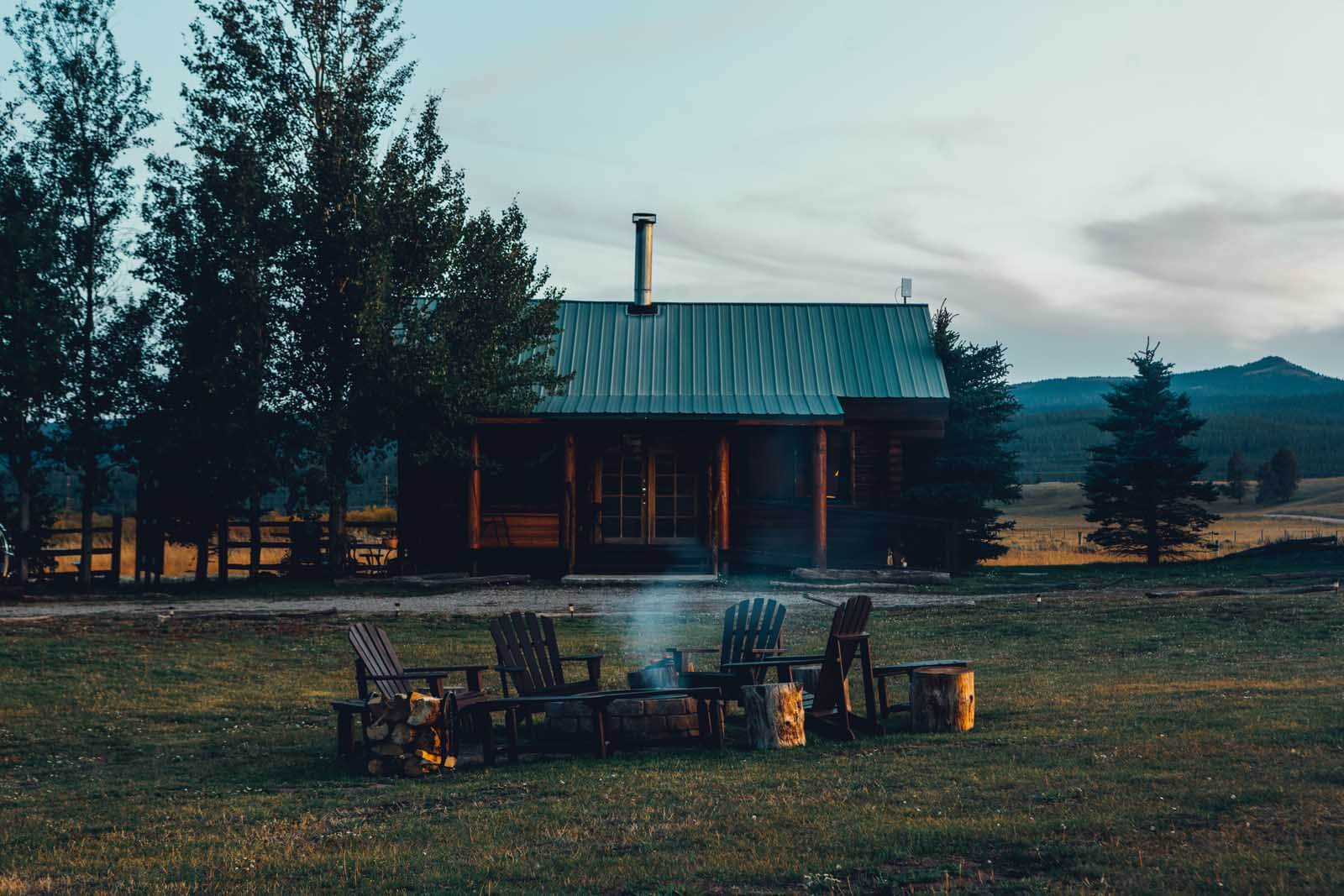
We are recommending some great options for where to stay during your trip visiting all the best Yellowstone attractions. We tried to pick options that wouldn’t be booked out years in advance like the popular inn right next to Old Faithful. Booking any of these options will require some planning in advance to secure your spot for an unforgettable trip exploring what to do in Yellowstone.
Canyon Lodge & Cabins
Located in Canyon Village just along the Grand Canyon of Yellowstone is this comfortable and luxurious hotel inside the park. In addition to cabins and hotel rooms there are two restaurants on-site making this a great location and place to explore what to see in Yellowstone.
Compare Prices for Later on Hotels.com | See Rates on Expedia.com
Lake Hotel & Cottages
Enjoy staying right on Yellowstone Lake in this beautiful and cozy hotel just a short drive to some of the main Yellowstone attractions. The rooms are comfortable but do not offer amenities like television. There is a bar and restaurant on-site as well as a gift shop.
Compare Prices for Later on Hotels.com | See Rates on Expedia.com
Mammoth Hot Spring Cabins
Another amazing hotel and location just a 15-minute walk to the Mammoth Hot Springs. This option is great for anyone who wants easy access to the park but also leave since you are just a short drive to Gardiner, Montana. There are different guest houses/cabins on site that are basic but cozy and perfect for a stay in the park. There’s also a bar and restaurant on site.
Compare Prices for Later on Hotels.com | See Rates on Expedia.com
Bar N Ranch (West Yellowstone)
For an evening stay just outside the park in West Yellowstone, we highly recommend Bar N Ranch for their beautiful property and cabins as well as rooms in the main lodge. This is where we stayed with a group and we were blown away by their larger cabin that made us feel like we were at home complete with its own hot tub with a view of the nearby mountains.
There are also smaller cabins, rooms in the main lodge, and yurts as well.
Book Now on Booking.com| Compare Prices for Later on Hotels.com | See Rates on Expedia.com
The most famous thing to see in Yellowstone National Park is Old Faithful, this geyser is one of the most predictable to determine when it will erupt every 60 to 110 minutes, reaching heights of 100 to 180 feet.
Yellowstone National Park is known for its impressive geysers, unique geothermal features, its wildlife, and impressive landscapes, and for being the first national park in the United States.
The best time to visit Yellowstone National Park is during the shoulder seasons of spring (April to May) and fall (September to October). These periods offer milder weather, fewer crowds, and abundant wildlife sightings. However, this is a year-round destination and each season in Yellowstone has something unique to offer.
To fully experience Yellowstone National Park, it is recommended to spend at least three days exploring its various attractions, geothermal features, wildlife, and hiking trails. However, some of the best Yellowstone attractions can be seen in one carefully planned day.
Found this post on the most incredible things to see in Yellowstone and the best picks for what to do in Yellowstone helpful? Bookmark for later or share the love below on Pinterest.
